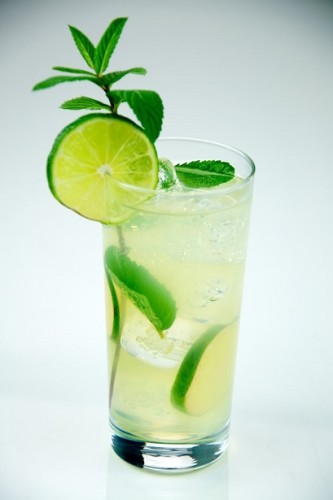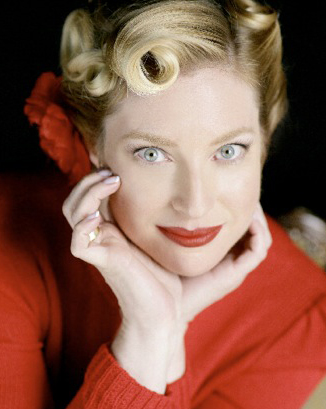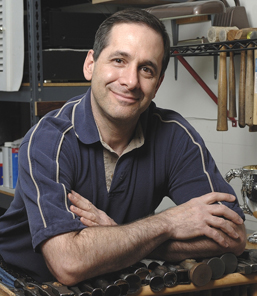
The Modern Butlers’ Journal volume 12, issue 4
International Institute of Modern Butlers
Teaching Right Mindset, People Skills, & Superior-service Expertise
Message from the Chairman
There were two examples this month of butlers talking in public about their employers, which raised some eyebrows amongst those in the profession.
The first was an ex-White House butler talking about First Lady Nancy Reagan. Good things to say, of course, but perhaps we have a different standard when we talk of the White House butlers (more waiters than butlers): they were and still are allowed to bring cameras to the WH and photograph whatever they want. They are obviously not discouraged from talking of their experiences to the media. Perhaps because their employers are public figures, not private employees.
The other was Mr. Trump’s butler. Leave it to The Guardian, an English newspaper, to point out that the butler’s name is almost identical to a word for butler (seneschal, a word with German roots meaning “old servant.”) that was in general use in England during the 12th-15th centuries. Our good seneschal also had good things to say, to be sure, and with the obvious blessing of a charismatic/outgoing employer whose political strategy includes accumulating as much free publicity as possible.
What is the take-away? When working for politicians, media contact may well be encouraged, as long as it promotes a good perception. As the saying goes, “It’s a PRO (Public Relations Officer) world,” and one of the duties of the butler is that of a PRO. This is not so strange, as we are always expected to forward positive ideas to family members, guests, staff, vendors, and strangers, and to nip smartly in the bud, any bad-mouthing or dissension.
So I would encourage the eyebrows to come down to normal range again regarding these two specific cases, as we have exceptions to the golden rule we grew up with in private service.
On a different note, long an iconoclast (a person who attacks cherished beliefs), or perhaps a Luddite (a person who opposes the unwanted effects of new technology), I have eschewed (avoided) “social media” and virtual reality in favor of reality. Recently, I broke ranks with myself to explore the world of social media by reading a book that requires reviewing ones company’s image on the Internet. I was heartened to see the views of the Institute held by others: One person referred to the Institute as being in “the Ivy League of butler schools.” Not to blow our own horn, but to confirm that kind words go a long way, and to relay our thanks for brightening the day.
Letters to the Editor
“Nice photo on the cover this month. The idea of wearing “white tie” in the afternoon was very funny…. Unfortunately, nobody wears white tie anymore. It could be good for us to wear on those occasions where guests wear dinner jackets to distinguish ourselves from the guests. But even dinner jackets are very rare today. People just do not know how to dress anymore.
“The thing I like about England is that dinner jackets are still considered evening dress for men on most occasions and men learn to wear them from their university years, thanks to a number of balls and other social events.
“With regard to gentlemen’s clothing, I found one web site, Gentlemen’s Gazette, to be a very good source for valets and butlers seeking information on anything related to menswear.” GL
Butlers in the Media
To the ever-growing list of goods and services capitalizing on the reputation of our profession by including it in their name, we can now add Trash Butler (who doubles as a Doorstep Valet) and Trendy Butler (a fashion club).
BMW’s virtual butler in its prototype autonomous car is reminiscent of the holographic butler appearing like an attentive genie in the Bentley concept-car shown in a recent MBJ.
When space is tight and there is no room for a butler in the vehicle, it is a good idea to have a virtual butler to provide some needed services, and these will no doubt prove popular if and when included in the Bentleys and BMWs of the future.
A handful of North American airports are providing Airport Butler concierge service. Kudos for upping the service levels, but why lay aside a perfectly good, and certainly accurate, title like “Concierge”? Another concierge service describing itself as “Butler Service” has also been launched in Adelaide, Australia, providing errand services similar to those provided for busy people in NYC and elsewhere.
An interesting article on the Family Offices that are the 21st Century “butlers” that run not just one or more domestic households, but the complex financial and other concerns of multi-millionaires and billionaires.
Let’s Talk about Mixology, Part 11
by Amer Vargas
Mojitos
If you are past your mid-30s, I am pretty sure you have watched (or at least heard of) Miami Vice, the TV series depicting undercover detectives James Crocket (Don Johnson) and Ricardo Tubbs (Robert Michael Thomas) and their quest to stop drug dealers and mobsters.
That TV series led to a film tribute in 2006, which then served as a minor revival with new “good” and “bad” guys. In the movie, Colin Farrell’s character, Sonny Crockett, exhibits quite a preference for a particular cocktail, a “fiend of mojitos” as he calls it, which has him visiting Cuba to sample one at La Bodeguita del Medio in Havana—a bar that actually exists and is credited with being the first ever to create and sell this cocktail to such luminaries such as Ernest Hemingway.

How to make a Mojito? To start, use 4 cl/1.3 oz of Cuban White Rum (it is important not to use aged or dark rum as it would eclipse the taste of the other ingredients), 3 cl/1 oz fresh lime juice, 6 leaves of mint (the original recipe calls for spearmint or yerba Buena, more aromatic and flavorful than regular mint), 2 teaspoons of (cane) sugar, soda water, and crushed ice.
Before discussing the preparation, a note on muddling is in order: the objective of using the muddler (or pestle) is to release the essential oils of herbs, or extract the juices of fruits. Thus, for the different objectives, different pressure should be applied: lighter for the herbs and firmer for the fruit. The procedure involves pressing down the muddler and making half turns at the same time. Generally, repeating the motion 4 to 6 times suffices.
This cocktail is prepared directly in the serving glass, commonly a lowball, a highball or a Collins. Place the mint leaves in the palm of one hand and then clap them with the other hand to release the aromas from the herb. Place them inside the glass with the sugar and the lime juice and muddle gently to avoid breaking the veins of the mint leaves—which would add an unpleasant, bitter taste to the cocktail (some bartenders like to muddle lime wedges rather than just pouring the juice, which sometimes makes the mint leaves break). Add a splash of soda water, fill half a glass with crushed ice and pour the rum. Stir gently so as to dissolve the sugar a little bit and mix the ingredients; finish by topping up the glass with ice first, then with soda. The common garnishes for this cocktail are a sprig of spearmint leaves, a lemon or lime slice or wedge, and served with a straw.
Many variations of this cocktail exist and most of them follow a simple principle: swap the lime for your favorite fruit and then use the same fruit as a garnish.
There you are: easy to make, even easier to enjoy!
Mr. Vargas is the Institute’s President and can be contacted via AmerVargas @ modernbutlers.com
Of Butlers and Roses, Part 24 of 30
by GJ dePillis
A Rose by Any Other Name is not only Delicious, but also Nutritious
Last month, we entertained the idea of eating rose petals, which perhaps surprisingly, can also be quite nutritious: they contain bioflavonoids and antioxidants, as well as significant amounts of calcium and vitamins A, B3, C, and E. As a matter of fact, a rose can contain more vitamin C and 25% more iron as an orange.
This month, let’s explore some rose recipes.
Firstly, a point of safety: Never eat, or otherwise ingest, anything using a rose that has been sprayed with non-organic herbicides and pesticides. Some ornamental flowers on your employer’s property may have to be sprayed, but the roses closest to the kitchen, along with everything in the herb garden, should remain organic, and utilize natural pesticide remedies.
Recipes

TEA: Rose hip tea is made simply by placing dried rose hips, a clove or two, honey and boiling water in a cup or pot. Let it steep for about five minutes, remove the hips and cloves, then pour.
DRIED: Take and wash the rose petals and lay them out on wax paper. Remove any insect nibbled petals or discolored petals. Either let them dry in the sun (covered with gauze or cheese cloth so they don’t blow away and are not open to insects) or dry them on a cookie rack in a cool oven (about 150 degrees Fahrenheit). Then store them in a container that will keep them dry.
ROSE SYRUP:
- Take rose hips and place in a sauce pan, barely covered with water;
- Bring the water to a boil, then simmer for about 15 minutes (make sure the pan does not run dry). Ensure the hips stay whole, or there will be hairy seeds in the syrup;
- Cool and strain;
- Add 1 cup of honey to 2 cups of the Rose Hips liquid;
- Store in the refrigerator for about two weeks. Serve on pancakes, waffles or any dessert that would benefit from a dash of rose-flavored syrup.
ROSE BUTTER: when considering a high tea or simply a unique variation to bread and butter, you may want to ask the chef to make rose butter.
- Take a large jar and line the bottom with fresh rose petals;
- Take a stick of butter and leave it wrapped in its wax paper wrapping and place on top of the rose petals inside the jar;
- Cover the wrapped stick of butter with rose petals and tighten the jar lid;
- Place in the refrigerator for two days;
- Allow the butter to warm to room temperature and spread on fresh bread. Garnish with either rose petals (remove the white bottom part of the petal as that part is bitter) or clover blossoms. Serve with tea or other crumpets.
ROSE WATER:
Boil rose petals in water and let sit for 24 hours to make rose water. Then strain and use.
CRYSTAL ROSE:
This is a unique recipe that is hundreds of years old, for a delightful, crystalized rose petal to serve in place of regular sugar on the table.
- When collecting rose petals, select only healthy looking petals that have not been nibbled on by garden pests;
- Wash and dry the petals;
- Remove the bitter white parts and spread out on a clean paper towel;
- Mix 2 ounces of arabic gum with ½ pint of water until the gum crystals dissolve, then sprinkle this on top of the dried rose petals; (For those who may not be aware, arabic gum is used in the food industry as an emulsifier in soft drinks, chocolates and other products, and may also be called “acacia gum” or “E414.” It is made from the branches of the acacia Senegal tree);
- Sprinkle the rose petals with castor sugar until fully covered. Let it sit 24 hours;
- Take a stainless-steel pan and boil about ½ pint of water with 1 lb of sugar. Dip a cold spoon into the mixture and pull the spoon out. When the hot mixture forms “threads,” then it has reached about 250 degrees Fahrenheit and is ready for the next step;
- Place several rose petals (not overlapping more than 1 petal deep) into shallow dishes or saucers, then pour the warm sugary liquid over the petals. Let it soak 24-36 hours;
- Take these petals and place them on wire racks and place them in the oven so that warm dry air circulates around the sugar-crusted petals. You may want to set the oven on low (about 150-200 degrees Fahrenheit and leave the door ajar a crack to let air in). Bake them until they are crumbly;
- Crush them up and serve the rose sugar in a regular sugar bowl. It makes a lovely accent with a delightfully unique flavor.
Ms. dePillis is a freelance contributor to the Journal who is based on the West Coast of the United States. She can be reached via depillis @ gmail.com
 Consulting the Silver Expert
Consulting the Silver Expert
by Jeffrey Herman
Q: How does one detect the presence of tarnish?
A: Have you ever wondered if you have removed all of the tarnish fully from an object? You can know for sure by simply holding a piece of white paper next to the piece you’re working on. Any remaining tarnish will contrast with the white paper to show whether additional polishing is required.
A note of caution: Do not to mistake firestain for tarnish on pieces made in pre-colonial America into the early Twentieth-century.
So what is firestain?
Technically, it is oxidized copper, which shows as darker, blotchy areas on solid silver. It is not seen generally on pieces that have been produced by the large American silver companies after the early 1900s, but many one-person silversmithing shops still use this technique.
If after cleaning your silver (not silverplate) piece, a purplish stain remains, do not mistake this stain for tarnish and try to remove it, as it will only damage the piece further.
Such stains are obscured generally by applying fine silver, either silver plating the object or through a process called depletion. The firestain under this fine silver layer, which may be a few thousandths of an inch thick, may not show up until after many years of polishing.
Mr. Herman continues to offer his services to our readers for any questions you may have about the care of silver. Either call him at (800) 339-0417 (USA) or email jeff @ hermansilver.com
The Institute is dedicated to raising service standards by broadly disseminating the mindset and superior service expertise of that time-honored, quintessential service provider, the British Butler, updated with modern people skills, and adapted to the needs of modern employers and guests in staffed homes, luxury hotels, resorts, spas, retirement communities, jets, yachts & cruise ships around the world.



